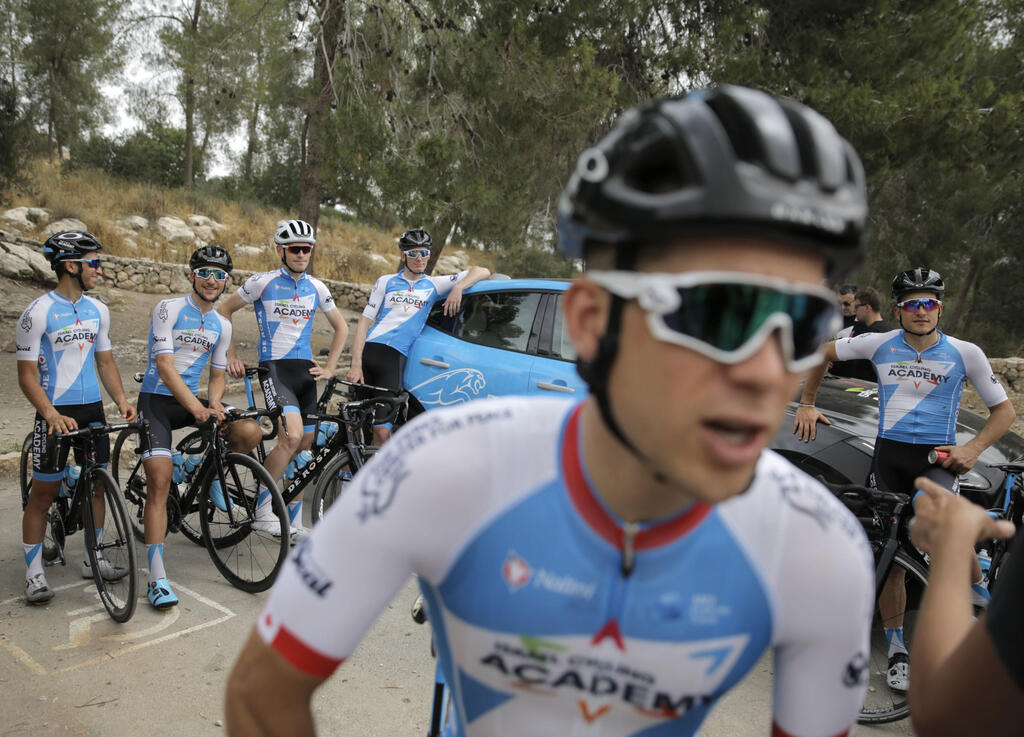Getting your Trinity Audio player ready...
The Olympic Games in Paris have concluded, with athletes across all disciplines pushing themselves to their limits to claim their spots on the podium. Today, science plays an indispensable role in athletic achievements, not through the development of advanced technologies such as high-quality running shoes but also by enhancing sports techniques. Everything needed to run and swim faster, jump higher, and be stronger than the competitors.
This investment in innovation is also evident in cycling competitions. Bicycles today are lighter than before, better designed, and more customized to the rider’s physique. Helmets are now more comfortable and aerodynamic, and even the clothing is meticulously engineered. Cyclists often rely on their teammates, forming strategic formations that reduce air resistance and help conserve energy for the race's critical moments. And what about posture? Researchers from Australia have been analyzing the most efficient cycling positions for speed for over a decade.
Against the wind
Cycling is a popular and widespread sport globally. It’s no coincidence that the Tour de France, the world’s largest cycling competition, attracts enormous media coverage and is often considered the third most important international sports event, after the Olympic Games and the FIFA World Cup. Since their invention in 1819, bicycles have gained a reputation as light, inexpensive, and practical means of transportation. They also played a significant role in the women’s rights movement in the 19th and early 20th centuries.
To excel in cycling from a competitive standpoint—potentially ranking among the top contenders in events such as the Tour de France or the Giro d'Italia—requires specialized skills. A 2018 article in the International Journal of Sports Physiology and Performance outlined key guidelines that could enhance cyclists' performance. Notably, researchers from Edith Cowan University in Australia found that adjusting posture on the bicycle could increase a rider's speed by up to 3.1 mph during race-critical moments, particularly during the final sprint. For professional cyclists, this gain can be the decisive factor in determining their ranking against competitors—whether in head-to-head contests or while leading the peloton.
Let’s look at some statistics. In professional men’s cycling competitions, the average speed during the sprint phase is about 39.7 mph, typically lasting between 9 and 17 seconds. For women, the average sprint speed is around 33.4 mph, with sprints lasting from 10 to 30 seconds. During sprints, the mechanical power output generated by the average male cyclist ranges from 13.9 to 20.0 watts per kilogram, and from 10.8 to 16.2 watts per kilogram for the average female cyclist.
However, mechanical power output isn’t the only factor influencing victory; environmental factors also significantly impede progress during a race. Chief among these is air resistance, which accounts for about 95% of the forces opposing even the most vigorous riders, especially during the critical sprint. In particularly close races, where the outcome can be decided by as little as 0.3 milliseconds, any advantage—no matter how slight—can be decisive.
This is where a strategic solution comes into play, one that many cyclists have already embraced: leaning forward and lowering the head and torso during the sprint. This posture, known as the balanced stance, has been found to significantly reduce air resistance, making it easier for cyclists to gain ground during the most pivotal stage of the race.
And in first place...
To test the qualitative advantage provided by the forward-leaning posture to cyclists, researchers analyzed cyclists' movements in three different positions: leaning forward or the two most common traditional positions in competitive cycling: sitting and standing. The cyclists were asked to ride along a 820-foot road segment in each of the three positions, either with or against the wind, at average speeds of 15.5 mph, 19.9 mph, and 24.9 mph, which are slightly below typical sprint speeds. Each cyclist completed the course a total of 18 times, allowing the researchers to gather comprehensive physiological metrics and performance data for each participant. By taking into account each cyclist’s natural attributes and the riding conditions, they were able to evaluate the air resistance each cyclist encountered in each of the tested riding postures.
The findings revealed that leaning forward reduced air resistance by 23% compared to sitting and by 26% compared to standing, the traditional sprinting positions. For cyclists, this reduction in air resistance translated into a speed increase of 2.4 to 3.0 mph. This difference is significant for a competitive cyclist striving for victory: in a sprint lasting around 14 seconds, this speed boost could provide an advantage of 49 to 62 feet.
Of course, many factors that affect cyclists are still not fully understood, including mechanical power, road conditions, and other environmental variables that differ from race to race. Although researchers estimate that the overall impact of these factors accounts for no more than five percent of the cyclists’ total movement, in close competitions, every mile per hour and every foot can make a difference. Nonetheless, this research marks another step forward in our understanding of the physics and physiology of cycling. Enjoy the ride!


